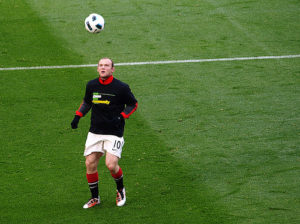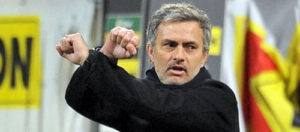Some football club names don’t really need explaining; for example, United, City, the Reds, and the Blues. However, there are a few that do. As we’ll see in a little, for every United, there’s an Owls, Hornets, or Gunners. The Hatters, a famous moniker for Luton Town, belong to the second group. So, where did it come from? What is the club all about? Let’s find out.
Luton Town Nicknames
Fans of Luton Town are known as “The Hatters,” the team’s most popular nickname.
As early as 1890, Luton Town began paying its players, making them the first southern English team to turn professional. The club was known as The Straw Plaiters in London publications at the time, a nod to the town’s renowned hat-making industry.
Why Are Luton Town Called ‘The Hatters’?
The town of Luton and its neighbouring villages and towns were formerly a major international centre for hat-making, which is why Luton Town are famously known as The Hatters. Images of the straw hats that made Luton renowned around the world are included on both the club’s and the town’s crests.
From the Straw Plaiters to Hatters
There was a time when this town was the global hub for hat manufacturing. Specifically, straw hats were its claim to fame. For this reason, the club’s original name was the “Straw-plaiters” or “Straw-hatters,” which was shortened to “The Hatters” in later years.
The town’s coat of arms and the club’s crest both include straw hats. As a matter of fact, in 1933, when Luton were riding high in the FA Cup, thousands of fans wore straw hats as they made the journey from Luton to Liverpool.
Luton began their run in the FA Cup with a First Round victory over Kingstonian, which was a replay, when they were still hovering around the middle of Third Division South.
After defeating Stockport and Barnsley in consecutive replays, they were able to earn a home draw with Tottenham. They advanced to the Fifth Round thanks to a 2-0 win, and they continued their winning streak away to Halifax, also by a 2-0 score. The club’s straw hats were in vain, though, as Everton’s strength in the First Division was too much for Luton to overcome in a 6-0 loss. After a 3-0 Final victory over Manchester City, Everton claimed the 1933 FA Cup.
Who Are Luton’s Rivals?
Although there is only 16 miles separating the two teams, crowd violence has plagued meetings between Luton Town and Watford, who are Luton Town’s primary rivals.
In 2002, 29 fans, including 25 from Luton and 4 from Watford, were charged for fighting in Watford city centre and inside the club’s Vicarage Road venue before and during a League Cup match. Some of these fans were given lifelong bans from entering football stadiums.
Regrettably for The Hatters, there has been scant on-field rivalry in recent years; since 1997, the Hornets of Watford have finished each league season as the higher-ranked team. Matches between the two teams are occasionally called the “Bed-Herts derby” due to the fact that Luton is located in Bedfordshire and Watford is in Hertfordshire. Anger at Queens Park Rangers was also expressed by Luton Town supporters in a 2003 poll.
For how long was Luton Town a Premier League club?
In 1991–1992, the last year of the First Division before it was renamed the Premier League, Luton Town made their last appearance in England’s highest level of professional football. They were demoted after finishing 20th in the 22-team league.
From 2009 through 2014, the team was in the non-league for five seasons, during which time they faced on-field and off-field issues. Luton would create history in English football if they were to become the first club to go from the top division to non-league and back if they ever were to get into the Premier League.
How Did Luton Become the Centre of the World’s Hat Industry?
Although it took some time, Luton eventually became the world’s leading hat producer. The town had 500 hat manufacturers in the 1800s, and by the 1930s, they were cranking out 70 million hats annually! From a sleepy little market town, the area has transformed into a manufacturing behemoth. Hat and straw plaiting making may have entered the local economy as early as the mid-seventeenth century.
The local straw plaiters petitioned Parliament to ban imported plait and hats in 1689 and 1719, after the industry had grown to a certain point. Straw hats were all the rage in the 17th century, but with such a tiny domestic market, they had to be imported from far and wide. However, plait and hat imports were obstructed throughout the Napoleonic Wars (1789–1815). After the wars ended, import tariffs were significantly higher. In the decades that followed, Luton took advantage of the situation and became well-known for its straw hats.
The Industry Flourishes
The industry had to get creative to discover a replacement for the high-quality Italian straw that had been imported before, as the hefty import charges made it impossible to import straw from other countries. It was discovered that a high-quality plait could be made by splinting the coarse and heavy English straw and then plaiting it. The business world took off at a sprint. A lot of the big estates in Luton were being sold off and divided up between 1820 and 1840. There was a dramatic increase in the number of hat workshops in the town because getting into the industry was simple and inexpensive.
Women and children learned the profession at “plait schools” and did most of the labour. The Board of Health in Luton had to step in during the 1860s because the town’s plait market had become too big. To move the market indoors, the purpose-built Plait Halls were established in 1869.
Despite the fact that the business appeared to be stronger than before, warning indications have been popping up for some time. Plait started to be imported from China after the repeal of the Napoleonic Wars in 1861, and the development of sewing machines in the 1870s created hats more rapidly and cheaply. English braid was priced six times higher than Chinese plait and twice higher than Italian plait by 1894.
Women working in the business left for higher-paying jobs elsewhere as prices fell due to increased competition. England only supplied 2% of the plait used in Luton by the year 1900.
Conclusion
It is clear that the hat business has played a significant role in Luton’s history.
It was likely at its height when Luton Town Football Club was established in 1885. It was thus inevitable that the Football Club would adopt a moniker from the business world. The history of Luton Town’s nickname, “The Hatters,” is therefore complete.






